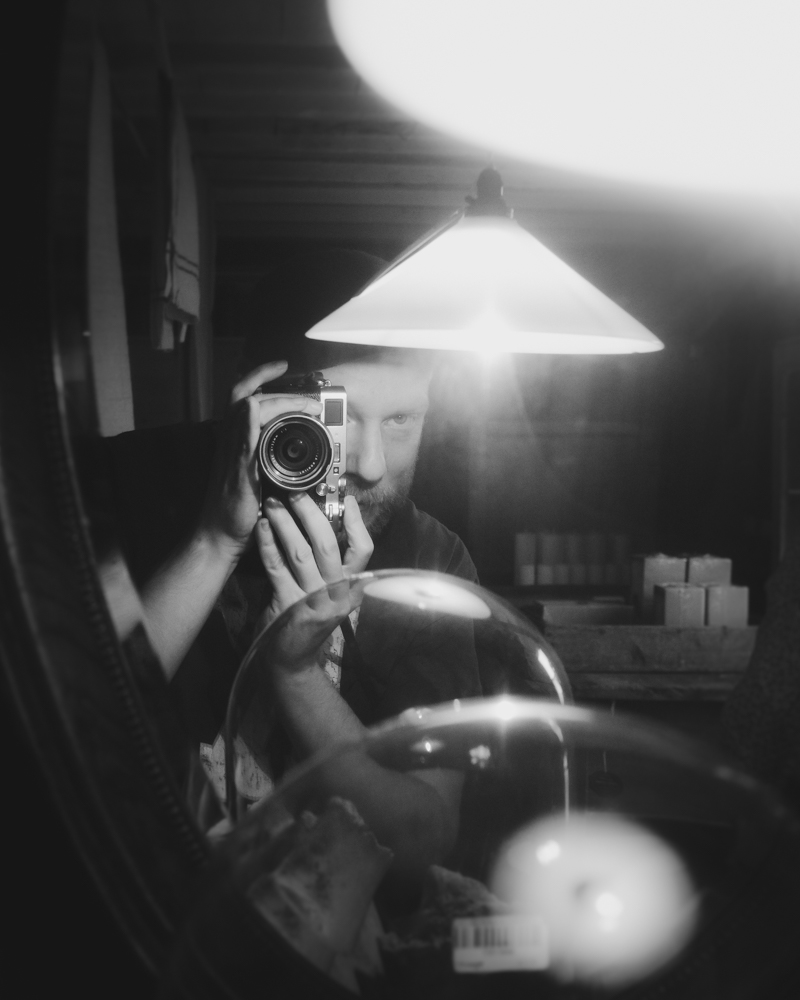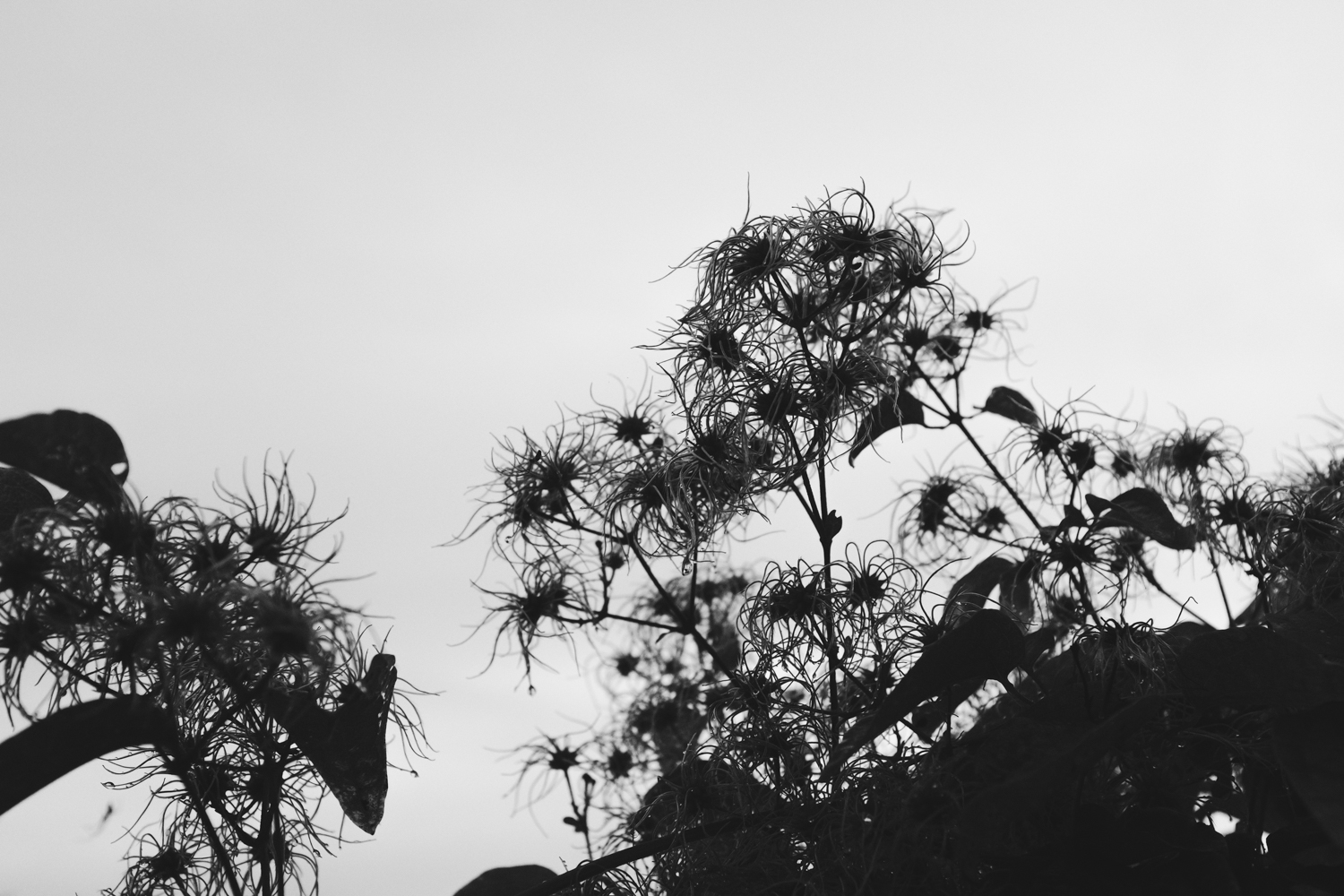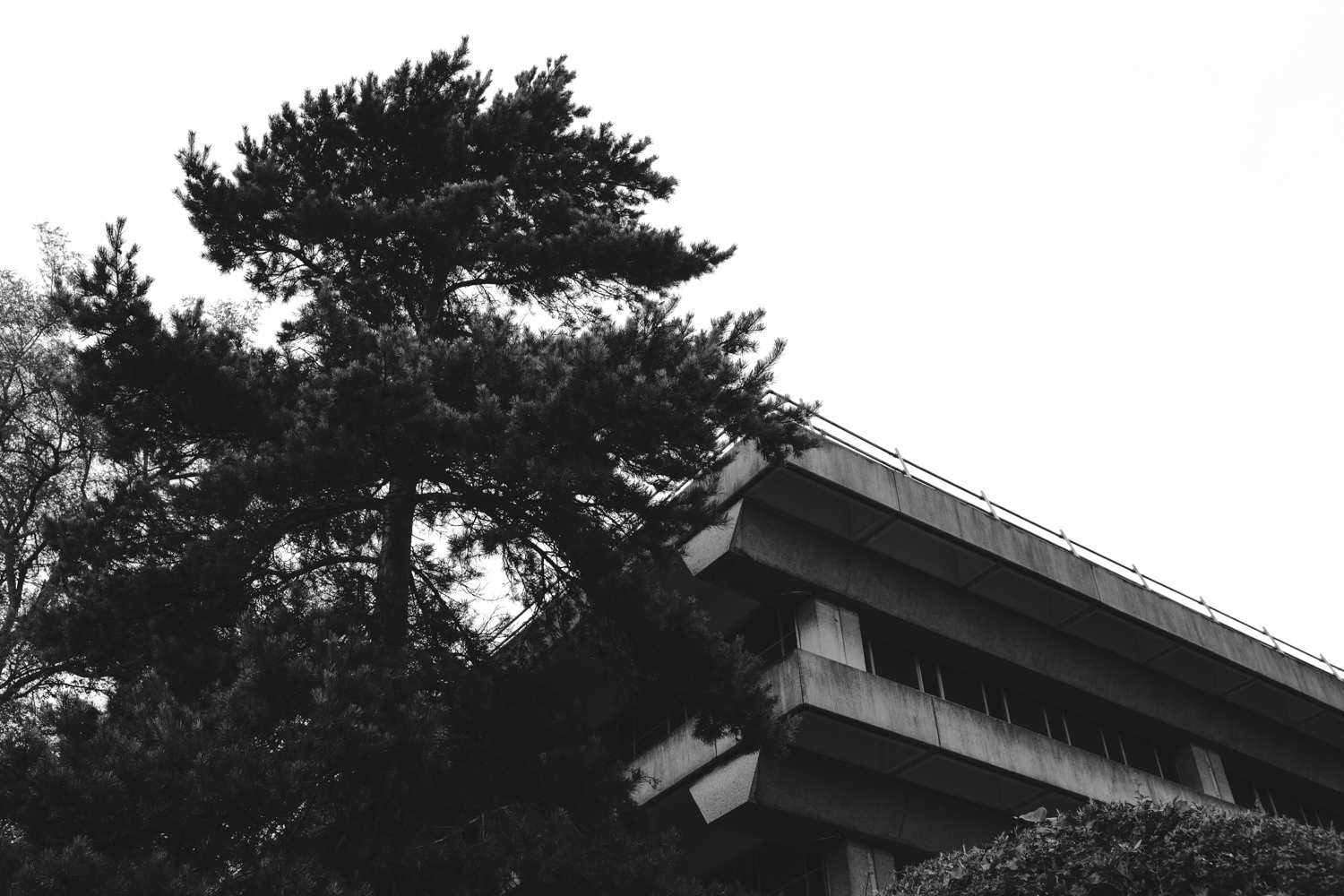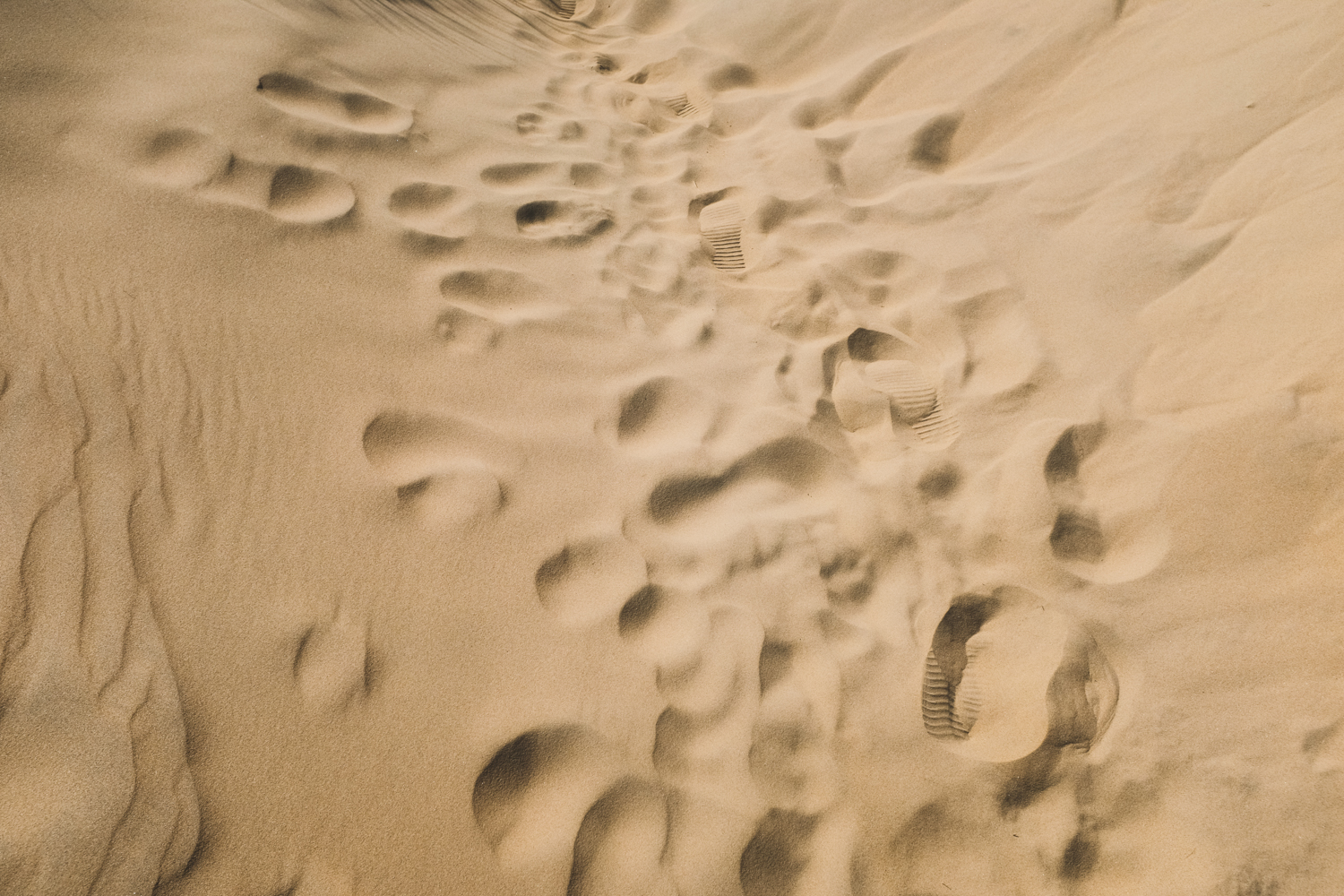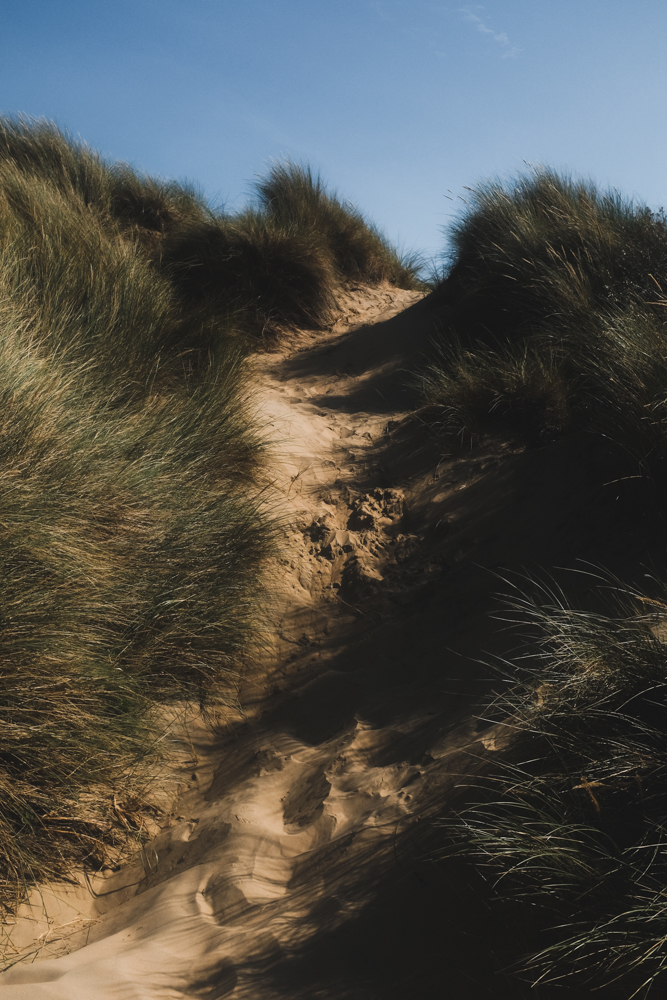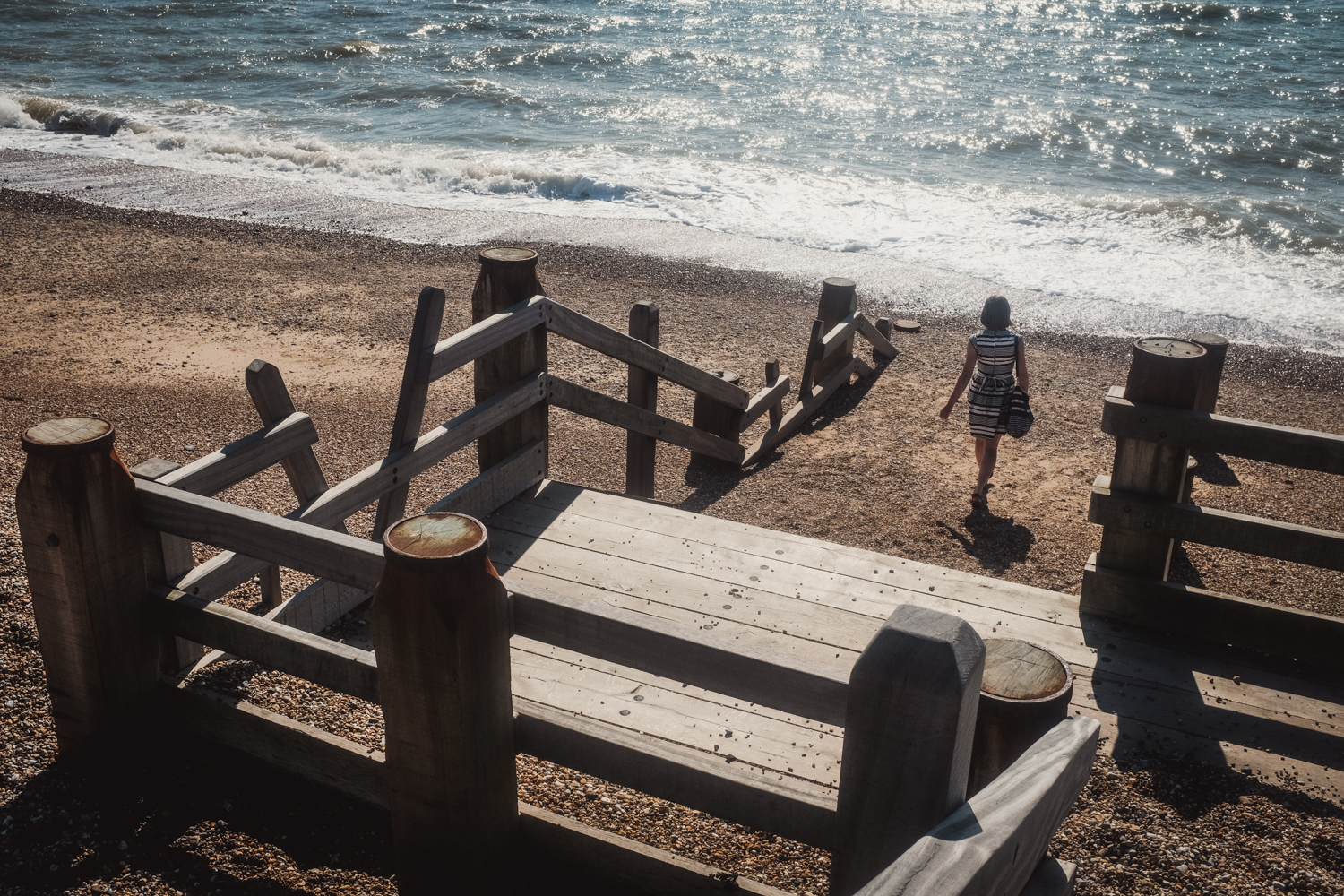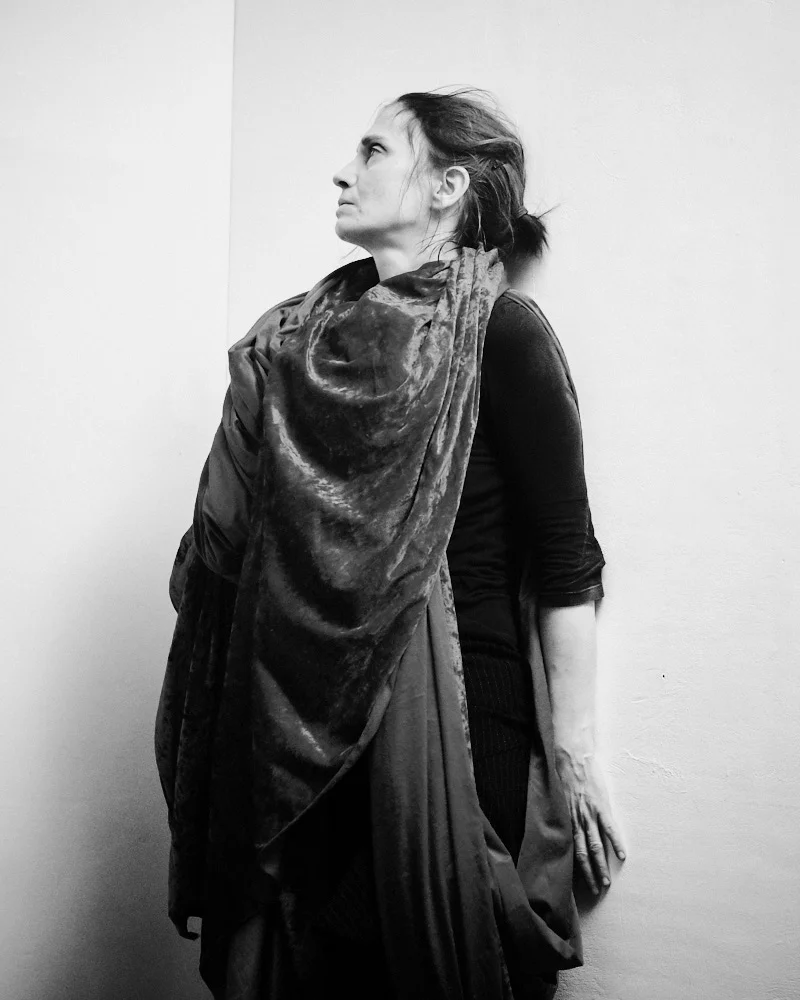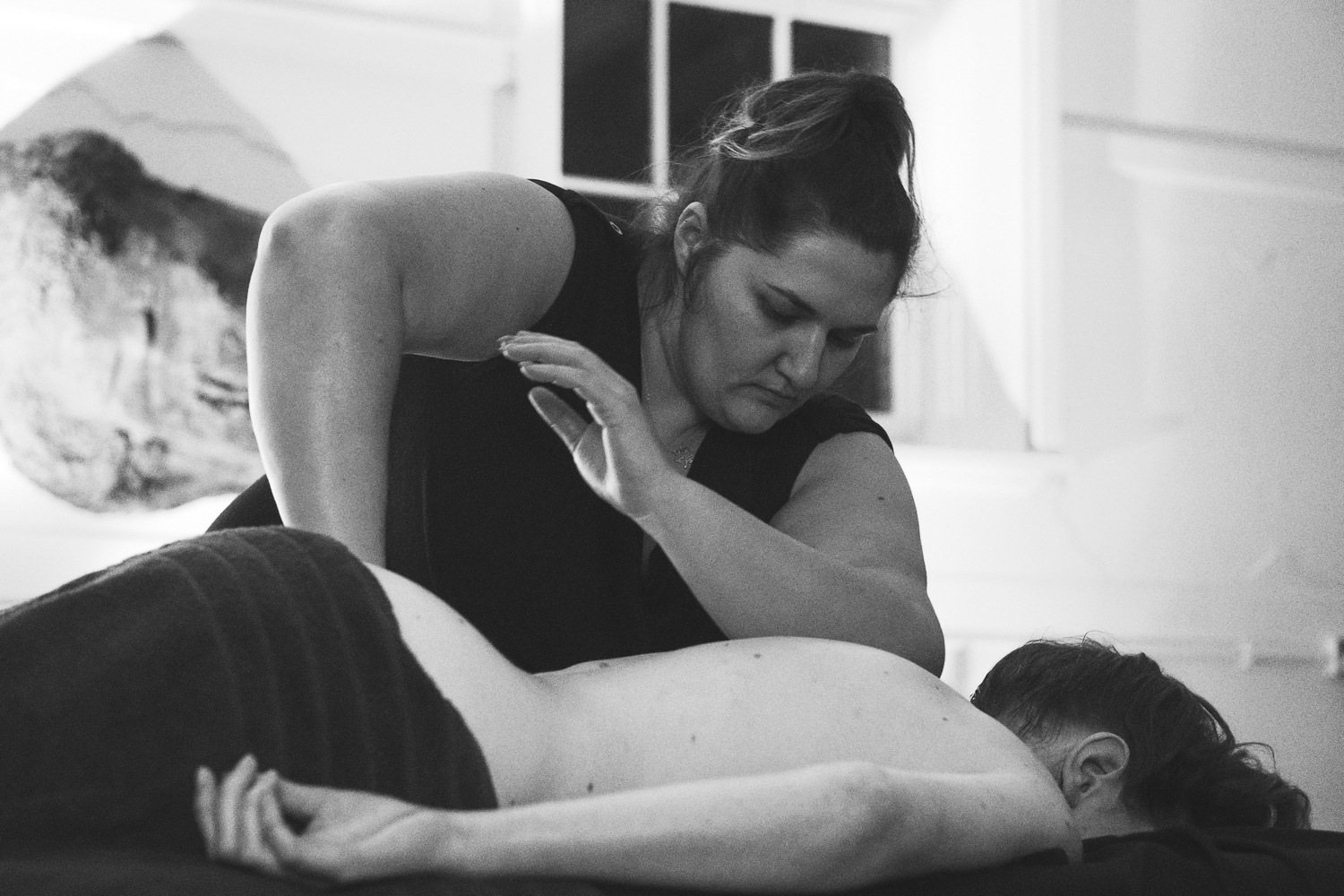A confession. I find it very hard to write reviews. Indeed, I find it difficult trying to strike upon the right words for any of my blog posts. This is probably why I'm completely unable to review any camera or lens until at least six months has actually passed with the damn thing in my hands. All the same writing them does give me an excuse to post some images and hey, if you have a coffee break to kill and an interest in cameras, then perhaps the following review of the little camera that could may be of interest...
... if you haven't been put off by the slightly 1940's gothic-creepy title image, that is.
All images are straight-out-of-camera JPEGs taken with the X100F.
For me, it started four years ago with the purchase of a refurbished X100. I bought it as a day to day camera, something I’d have on me always to capture the odd scene whilst my Nikon D90 would remain my workhorse project camera. Needless to say, in a matter of weeks the D90 began to gather dust and the X100 with its beautiful colour film simulations became the camera for hitting streets at home and abroad – and for gathering the material for my small town America project. A couple of months later, the D90 was traded in for its bigger brother, the X-Pro1, and I never looked back.
It’s funny though, despite falling in love with the Fujifilm X system I never got quite as big a kick out of the X100T as I had from the X100. Perhaps it was the X-Trans II sensor. Though it had the film simulation Classic Chrome working its magic, the files seemed less organic, less real to me than the X100’s traditional Bayer array and the first-generation X-Trans 1 sensor found in the X-Pro1. I wasn’t too sure about the waxy smoothness of the skin tones either. So despite the improved speed and controls of the X100T, it didn’t capture my heart the way the older model did. I shot with it often, but I didn’t feel moved to wax lyrical about its virtues. I respected it, but I just wasn’t in love.
Then the X100F came knocking...
BUILD QUALITY AND DESIGN
No joke, The X100F is one of the most beautiful cameras on the market today. I’d say that only certain of the Contax line and Leica film cameras have a more beautiful look to them, though it is of course a given that Leica’s current range of digital cameras can take more of a beating. Some of the unnecessary little flourishes of the previous X100 series have been done away with. For instance, gone is the little series-model letter stuck incongruously on the front on the camera. Branding is reduced to a minimum, with a dinky yet elegant company logo and series name on the top-plate. The elements on the front; the lens, viewfinder, flash, AF illuminator, viewfinder switch and command dial are all beautifully proportioned. Despite the small camera size, the dials on the top are well spaced and the back of the camera proudly goes about its business with the minimum of fuss. There’s the minimum of lettering given the programmable nature of the buttons, which adds further elegance and the sleek screen is nicely flush with the body.
Thanks to this design the camera looks the way you’d imagine a classic camera should look, a sort of archetype. The kind of camera you’d imagine finding in your dad’s drawer, a gleaming forbidden treasure with its clickable dials and bright viewfinder, one you’d fiddle incessantly with before inevitably dropping it on the floor in startled surprise as the door swung open to reveal one unhappy pappy. So yes, visually it really is a beautiful blend of form and function. Overall I’d say the button placement is a triumph and happily runs along the same lines as the X-Pro2, meaning there’s no mental disconnect as I switch between the cameras. They’re all along the right hand side of the camera, meaning that one handed operation is a doddle. And yes, there’s that all important ‘focus lever’ for fast AF focus-point selection. Initially I wasn’t too sure about the positioning of the Q button, it seeming to be strung up and out all on its lonesome high up where the back-button focus AEL/AFL buttons used to be. But in practice I find that it doesn’t get in the way at all, and my thumb just slides instinctively into place between the Q button and the focus lever, resting comfortably there. True, back-button focus is slightly less accessible now, but can still be wedded to the clickable control wheel, or the AEL/AFL button below the ISO dial.
The button customisation is excellent. Of particular use is the new button that sits in front of the focus lever. I’ve assigned the ND filter to it, as it’s less likely to be forgotten about with my right index finger hovering near it at all times. As for the D-PAD, the focus lever frees that up to cover everything you need. Click Left and I can access Face/Eye Detection. Click Right and White Balance pops up. As I shoot predominantly JPEG, I keep the Dynamic Range setting on the down arrow. This comes in handy as sometimes you want the camera to work overtime in reigning the highlights in and balancing the tones nicely, and sometimes you want to go all Moriyama and really crunch those highlights and shadows. Meanwhile the FN button works for wireless communication, or movie mode if you’re into that type of thing.
For those who aren’t fans of the ISO Dial, the command wheel can be reassigned. Personally, I love the ISO Dial and now find it pretty easy to change to a preferred setting whilst the camera is still up to my eye, but it’s good to know that Fujifilm is now catering for both yay and nay-sayers of this feature.
To be honest, I think the controls have pretty much reached a kind of perfection for the X100 line. (Though admittedly some photographers dislike the Q button placement.) The only great advancement I can think of would be to allow actual proper mechanical manual focusing and not the electronic fly-by-wire, but even that works pretty well now and I’m fairly certain that any attempt to introduce true traditional manual focusing would require a larger body and higher costs.
The same goes for the body. The camera feels beautiful in the hand, just a little bit heavier than its predecessors, giving it a welcome feeling of solidity and heft. I know we were all hoping for weather proofing but I do feel comfortable hazarding the X100 series in light rain. It’s a real shame they weren’t able to introduce it though, as it would be tremendously useful in its function as a travel camera. All the elements do feel very solid, however. The D-Pad is deliciously clickable. All the control wheels are made of metal. The dials are finely machined. Everything fits all solid and snug. Like the X-Pro2 it’s very nearly a perfect iteration and Fujifilm can feel proud.
And it’s this level of out-of-the-box perfection that raises an important question for the X100 series. Where can it go from here within the inherent limitations of the existing design? Personally I can’t really see any further tangible improvements being implemented with the existing body. The only possible leap forward using the essence of the original design is weather-proofing. An improved lens, be it in focus speed, sharpness or a wider aperture, would require considerable alteration to the design. It’s for this reason that I suspect the ‘F’ in X100F might possibly secretly refer to ‘Final’. For all you X100 lovers out there though, I’d advise not to panic. Fujifilm will most likely simply call the next, significantly altered model, the X200.
By the way, I'm actually terrible at product shots, but there are two reviews out there I can recommend with some very fine pictures of the X100F in all its beauty. Follow the links here to take a look...
VIEWFINDER
The biggest draw to the X100 series can be found in its viewfinder. To be able to have such a compact camera with a bright, highly advanced optical viewfinder is a rare thing indeed. At the flick of a switch you can move between the Optical Viewfinder with an optional and customisable ‘Head- Up-Display’ that includes such elements as histogram and artificial horizon, and an Electronic Viewfinder with an impressive refresh rate. Better still, you can have the best of both worlds by having an optical viewfinder with a little EVF window in the lower corner, aiding you both with manual focus and exposure by representing either a detail of what lies beneath the focus point, or of the overall scene. Street photographers will want to go OVF, given the ‘frame within a frame’ nature of the rangefinder styling – enabling you to see the subject before they enter the image frame itself. Those who demand finely tuned accuracy and previsualisation will enjoy the EVF. Whichever you choose, the very presence of the Hybrid Viewfinder makes of a fun and visually striking camera to shoot.
IMAGE QUALITY
The increase in megapixels has done nothing to impair the quality of the images given by the venerable 23mm f/2 pancake lens. However the change in the sensor has led once again to a different quality in the images. There’s greater colour tonality and accuracy in the new sensor, but the images do perhaps have a little less out-of-the-box punch as compared to the X100T. The rendering has changed a little too; details seem at once finer but more delicate, images feel a little airier and more filmic. These are purely subjective feelings of mine. You can squint until your eyes begin to bleed, scrutinising a comparison of one-hundred percent crops in studio conditions, but that won’t really tell you anything. Suffice to say the X100F has once again changed the look of its output. Regarding the series, I’d say I enjoy the visual look as much as I did the original X100, but it very much is of a different quality. Needless to say the images can be quite beautiful, but I’m having a hard time in describing the nature of it. I hope the images I’ve included in this review give you an idea as to the nature of it. All images are JPEGs straight from camera with a film curve added, and perhaps a little dodging and burning for good measure.
I’m especially fond of the ACROS JPEGs this camera puts out. The look finds a space somewhere between film and digital that is quite striking and recognisable, combing the best qualities of both. Something especially magical happens around ISO 1,600 where the carefully controlled grain works to emulate the old silver-halide emulsions. I’m finding it quite difficult to resist shooting black and white with this camera.
Be aware that, as ever, images of close-up subjects will be quite soft at f/2. This can give a pleasing dreamy effect with some portraits, but you will have to stop down to f/2.8 to gain a good level of sharpness. At f/4 the lens has tack sharpness, I find. The X100F also now includes a digital 50mm and 75mm setting that will crop your image and then do some jiggery-pokery with the pixels to maintain the 24 megapixel output. It’s available in JPEG only and whilst it’s reasonably useful at 50mm, you do notice a slightly dip in quality. To be honest, I find the sacrifice in quality at 75mm to be too great at 75mm. If you find yourself resorting to it a lot, I’d suggest getting the reasonably priced and optically excellent screw-on lens adaptors, which can change the 35mm into a 28mm or a 50mm equivalent.
PERFORMANCE
One of the happiest changes in the design is that it now takes the same larger capacity batteries as my X-Pro2. You’ll still want to take two along for an extensive day’s shoot, but no longer do you have to have four of the little beggars rattling around in your pocket. Battery life has definitely increased by a modest amount, despite the bigger draw on power of the new processor. And that processor! Just like with the X-Pro2, navigating the menu is now a snappy affair. The write speed and buffering is impressive, providing you have a decent SD card, and there’s no troublesome slow-down in the EVF even in low-light.
All this makes for a great secondary camera when put alongside the X-Pro2, having almost identical controls. Snap a portrait lens on to the X-Pro and you've got a great one-two punch system. My only regret is that Fujifilm haven't duplicated the X-Pro2's ability to rename its user settings. I really hope they address this with a firmware update.
Auto-focusing is more confident, less hesitant than preceding models. There’s no more hunting back and forth and focus speed and accuracy is greatly improved from how the X100T used to operate in low-light. It’s still not a speed demon by any means. The 35mm f/2 will still lock on faster by a good margin, but snapping photos on the fly is no longer a hit and miss affair and the focus speed will be sufficient to capture the little ones haring about. It’s pretty much as fast as it can be with the current lens installed, which strikes me as fast enough for everything excepting close-range sporting action.
The camera uses the same continual focusing system as the X-Pro2, but I haven’t given it a good testing yet as I’ve always preferred Single AF. I imagine it’ll serve in most situations, especially if the subject is predictable, but may suffer again in fast sporting action. In general I’ve also found the Eye and Face Detection system to be fairly accurate, though again, I don’t use it much.
The flash is useful as well. Much like the old Contax T2 it has a pleasing pop and renders pretty good effects in night-club settings. It’s also useful for a bit of fill in flash, and you can sync it to ridiculous speeds thanks to the leaf shutter. Be aware that it will drain your batteries that bit faster though, so pocket an extra little black brick if you’re planning on using it extensively in a shoot.
The X100F also has an electronic shutter mode that can boost the shutter speed up to 1/32000 of a second. This proved to be a very useful feature on other X-series cameras as it meant that fast lenses could be shot wide-open in bright sunlight, and in critical cases where silence was required you could get away with not having that distinct shutter click. In practice on the X100F it is less useful however. We already have the inbuilt ND filter which can knock the exposure down enough for wide open shooting in sunny conditions. The leaf shutter is also practically inaudible already, so there’s no advantage there. I’ve also found that using the electronic shutter indoors is a very risky business, as at all-too-many shutter speeds in artificial lighting banding is caused, to varying degrees of severity. You have to run tests first to find which shutter speeds are safe, and in the heat of the moment adjusting shutter speed you may find you knock yourself into a flickering and sickly danger-zone of horizontal banding. As such, I try only to use electronic shutter very, very sparingly indoors.
SUMMARY
The X100F is perfect for the documentary photographer who craves simplicity and yet needs a machine flexible enough to handle any situation. It's small, silent and looks entirely inoffensive yet can produce sharp files that can print big. With the two optional screw-on lens-adaptors the camera can cover the basic range of the 28-35-50mm spread. As such it's the perfect device for mixture of environmental portraiture, landscape, street and detail shots that any involved documentary project requires. Wedding photographers are going to love this little beast for capturing all their candid moments. Fashion photographers are going to love the insane leaf-shutter sync-speed for their flash photography.
Then there's the travel camera aspect. A 35mm equivalent f/2 lens can cover most situations, whilst the limitation in the focal length can add consistency to images and force the photographer to get inventive, helping them grow. It's small enough to cause no fuss for carry on luggage and no one takes you seriously when you use it.
For street photographers its really a no-brainer, this will do everything you want of it - though if you wish to go even smaller the Ricoh GR II is a very worthy competitor. (Though it doesn't have a viewfinder, it is considerably cheaper and has a fantastic 'snap-focus' feature.) Finally it's a camera you can always have on you. The perfect tool both for storytelling and for a visual diary. Perhaps more camera than we really need...
Back in the late sixties and early seventies Stephen Shore created a body of work that later came to be called American Surfaces. It covered a road-trip criss-crossing a good chunk of America, taking in motels, dying towns, bad breakfasts photographed on formica table-tops. It was a ground-breaking work, reviled by most critics upon release as an exhibition at MoMA, but one that later became a touchstone for a new school of photography, pioneering the 'snapshot aesthetic'. Its influence cam be felt today and the entire thing was shot on a little Rollei 35, a tiny matchbox sized camera with a sharp little Triotar lens. He changed photography with a little box with a fixed 35mm lens, embracing limitations and creating a powerful record of the 70's America. Around the same time Nancy Rexorth was creating eerie, dreamlike images of her native Iowa in black and white on a little plastic toy camera called a Diana. Her work freshly discovered by the likes of Alec Soth, these beautiful images have the feel of an intimate, personal, private and somewhat surreal world that seems timeless and effortlessly in keeping with the aesthetic of the best young photographers today - a work that feels as fresh now as forty-odd years ago.
And all that with a toy camera with a plastic lens.
Now imagine the stories you could tell with the X100F...
